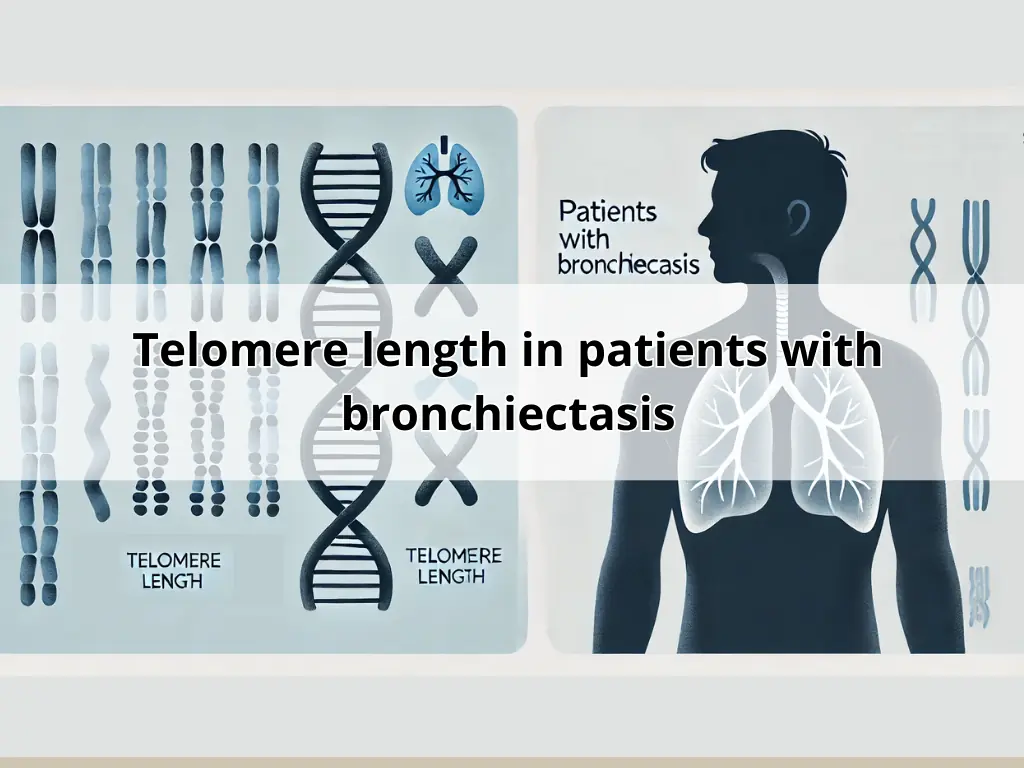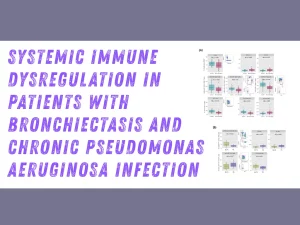Telomere length in patients with bronchiectasis

Background: The Role of Telomere Length in Bronchiectasis and Respiratory Diseases
Accelerated ageing markers such as telomere length (TL) have been associated with respiratory diseases such as COPD.
However, its role has not been deeply studied in the chronic lung disease bronchiectasis.
Our aims were: (1) to compare the association of TL with bronchiectasis vs. COPD and controls with normal lung function, and (2) to explore the association of TL with bronchiectasis aetiology and severity.
Methods: Measuring Telomere Length in Bronchiectasis, COPD, and Healthy Controls
Bronchiectasis, COPD patients and healthy volunteers were recruited in 2 tertiary hospitals in Barcelona, Spain.
DNA from whole blood was used to quantify TL by real-time polymerase chain reaction (qPCR). TL results were adjusted by age, gender and smoking status.
Results: Telomere Length Comparison in Bronchiectasis, COPD, and Control Groups
174 stable bronchiectasis patients, 240 COPD patients and 227 healthy donors were analysed.
The mean age of bronchiectasis patients was 69±12 years, 53% were idiopathic and the mean Bronchiectasis Severity Index (BSI) was 6.8±4.3.
The adjusted model showed that bronchiectasis patients have a similar TL to normal lung function controls (p=0.7) and a longer TL than COPD patients (p<0.001).
The bronchiectasis aetiology analysis showed that patients with idiopathic bronchiectasis tend to have a decrease in telomere length (p=0.06), but no differences in disease severity were found.
Conclusions: Understanding Telomere Length in Bronchiectasis Patients and Future Research
Patients with bronchiectasis do not present a decrease in telomere length compared with controls or COPD patients. A trend to decrease TL in patients with idiopathic bronchiectasis was found.
Further studies are needed to clarify the role of TL in the physiopathology of the disease.
Authors
Lídia Perea, Sandra Casas, Estrella Caballeria, Belén Solarat, Tamara Garcia, Núria Mendoza, Pilar Martínez-Olondris, Patricia Chang-Macchiu, Alvar Agustí, Amelia Shoemark, James D Chalmers, Rosa Faner, Oriol Sibila
Read more details at
Fecha de publicación
Published online October 27, 2023.
Categorías asociadas al artículo
Noticias relacionadas

Bronchiectasis and treatable traits: the journey from concept to clinical practice
Review of the treatable traits approach in bronchiectasis, exploring phenotypes, endotypes, comorbidities, and its translation into clinical practice.

Systemic Immune Dysregulation in Patients With Bronchiectasis and Chronic Pseudomonas aeruginosa Infection
Study reveals systemic immune alterations in bronchiectasis patients with chronic Pseudomonas infection, highlighting persistent immune imbalance.

Symptoms, risk of future exacerbations, and response to long-term macrolide treatment in bronchiectasis: an observational study
Observational study shows bronchiectasis symptoms independently predict exacerbations and identify patients who benefit from macrolide therapy, even with few prior episodes.
Artículos
Lung function
- 759688· Prof Eric Melen et Al. – Lung-function trajectories: relevance and implementation in clinical practice.
- 769289·Caspar Schiffers, Rosa Faner, et al. Supranormal lung function: Prevalence, associated factors and clinical manifestations across the lifespan.
- 769491·Tamara Cruz, Núria Mendoza, Gema M Lledó, Lídia Perea, Núria Albacar, Alvar Agustí, Jacobo Sellares, Oriol Sibila, Rosa Faner. Persistence of a SARS-CoV-2 T-cell response in patients with long COVID and lung sequelae after COVID-19
- 769799·Alvar Agusti, Peter G. Gibson, Vanessa M. McDonald. Treatable Traits in Airway Disease: From Theory to Practice
- 778797· Xavier Alsina-Restoy, Rodrigo Torres-Castro, Yolanda Torralba García, Felip Burgos, Joan Albert Barberà, Àlvar Agustí, Isabel Blanco Does arterial oxygenation during exercise add prognostic value in pulmonary arterial hypertension?
Imagen desarrollada desde DALL·E, tratamiento gráfico y Canva
